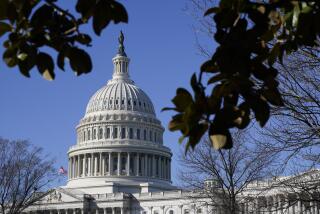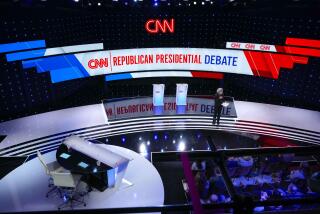Romney’s September strategy mystery: Why didn’t he spend more?
WASHINGTON — Campaign finance reports filed Saturday highlight a mystery that has been puzzling Mitt Romney’s allies: Why didn’t the Republican presidential challenger spend more money in September?
Top GOP strategists working for outside groups had expected Romney’s campaign to dramatically ramp up its presence on the airwaves after the Republican National Convention at the end of August, when he could finally get access to money raised for the general election.
GRAPHIC: Presidential campaign contributions, by state
But Romney’s campaign spent just $37 million on ads in September, according to its report filed Saturday with the Federal Election Commission. Overall, the campaign had just under $55 million in operating expenses that month.
That meant the GOP candidate was greatly outgunned on the airwaves by President Obama’s campaign, which poured $88 million into media buys in September, driving the campaign’s operating expenses up to $111 million for the month.
Romney’s relatively light presence on the air caught his outside allies off guard. His campaign entered September with $50.4 million on hand and raised money at a steady clip throughout the month.
Once it became apparent that the Romney surge was not coming, outside groups could only provide limited cover. A pro-Romney “super PAC,” Restore Our Future, had burned through its cash with a $20-million ad buy in August, assuming the candidate would not need as much support the following month.
The super PAC, which cannot coordinate with Romney or the Republican National Committee, aired just $4.1 million in ads in September on his behalf. (Restore Our Future is back up with a strong presence on the air this month, having replenished its coffers with $14.8 million raised in September.)
“Our strategy that we articulated early on to our donors was that we were going to maximize our spending in the month of August, which is when we felt historically challenger candidates need support the most and when we could be the most effective,” Charlie Spies, the group’s treasurer, told the Los Angeles Times last week. “We knew in September the Romney campaign would have their general election funds available.”
A Romney spokeswoman declined to comment on the campaign’s spending strategy in September.
But a source familiar with internal thinking said campaign officials decided that paid ads would have a limited impact during the two party conventions, so they held back during those two weeks. Throughout the rest of September, they sought to make selective, high-impact buys, believing that it made more sense to boost their spending on ads after the first debate on Oct. 3, when they hoped Romney would lodge a strong performance -- which he did.
There could be another reason for Romney’s limited expenditures in September: A large share of the money raised for his campaign is in the form of high-dollar contributions, most of which must be split with the Republican National Committee and other party committees. That gives him less control over how it is spent.
Of the $170 million that Romney for President, the RNC and a joint fundraising committee raised in September, just $41.9 million was in the form of direct contributions to his campaign.
Meanwhile, Obama, together with the Democratic National Committee and two joint fundraising committees, brought in $181 million – including $96.3 million in direct campaign contributions.
By the end of the month, Obama’s campaign had $99 million in the bank, while Romney’s campaign had $63 million. But including their party fundraising committees, Romney entered October with more cash on hand than Obama, $191 million to $150 million.
Maeve Reston contributed to this report.
Follow Politics Now on Twitter and Facebook
Twitter: @mateagold
More to Read
Get the L.A. Times Politics newsletter
Deeply reported insights into legislation, politics and policy from Sacramento, Washington and beyond. In your inbox three times per week.
You may occasionally receive promotional content from the Los Angeles Times.






